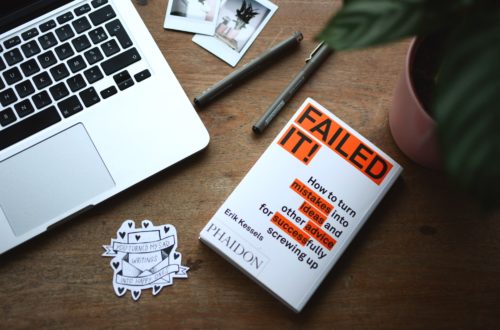
5 Things an ESL Push-in Teacher Should Consider Doing Differently or Start Doing.

The last couple of months as I continue my work as an ESL push-in teacher, I have grown, have started and given up a bunch of projects and ideas, have discovered things I ought to have or do to be efficient and avoid being desperate about having no classroom of my own and being a nomad in my own school.
With lack comes innovation and a better understanding of essentials I need in my profession, the tools that make my work productive, with no time wasted. What I also have learned is that evaluating administrators of ESL push-in teachers do not become more lenient or permissive of mistakes just because we don’t have a class of our own or we base our work on the content area teacher’s instructions and plans.
In fact, I grew to realize that my success as an ESL push-in teacher must depend only on me even though the reality of the school most often puts me on the spot in terms of how I can possibly function with no shared lesson plans, fast pace and the volume of the material in content area classes, the overwhelm of 4 subject areas in 2 different grades and no time to prep, minimum resources to work with, and having to figure out how to teach my EL learners amongst the chaos that might sometimes erupt due to behavior issues or lack of relationship with the content area teacher.
All in all, this year has been quite tough, challenging, overwhelming, quite deserving of a depression. Now that the school year is coming to its end, I have a rough idea of changes I would love to make for the next school year that would simplify my life as an ESL push-in teacher.
1. Pulling out groups of students.
Although my title is an ESL push-in teacher, I want to consider pulling groups of EL learners out to work with them in isolation from the mainstream classroom. The logistics of working in a classroom with a content area teacher and 25-28 students often create difficulties that might affect my teaching capability. On top of that, time wasted for discipline issues, instructions, class jobs, announcements, and many more can be recuperated when I take Els out to complete specific tasks.
These tasks can be labs (pre-lab questions, observations, analysis), test reviews, continuous practice of some concepts that already have been taught, essay writing, station work with graphic organizers in social studies, preparation for philosophical chairs, etc.
In short, after the material has been introduced by a content area teacher and the students are expected to practice, review, and analyze, pulling out English learners can be quite an effective way of delivering targeted support to English language learners.
Several times that I tried pulling out my English learners, I observed they were more focused, they assisted each other, they demonstrated more involvement in completing the task, and they felt less distracted by other activities in the classroom.
2. Exploring Danielson rubric.
Being observed is always stressful. However lighthearted you might assume you are about your evaluations, the truth is evaluation is brutally ignorant about your not having a classroom and having to lead a nomadic workstyle.
The evaluators are also not interested in how one prep period (my reality) can allow you to prepare for 6-7 different periods you work in. In the meantime, my colleagues might start a witch hunt on me, but I agree there is no excuse for coming to classroom unprepared, and teacher’s professionalism should be held to the highest standard even though we sometimes have kids throwing up at night, family issues and other earthy stuff happening to teachers.
You see, I’m not preaching self-sacrifice. By no means do I practice it. And yet I believe the hardest goals can be achieved and the highest standards can be reached when we know our enemy the closest – how we are evaluated. Knowing the process means being aware of the tools we have to possess to demonstrate high efficacy and professionalism.
Understanding the range of tools will make the job of showing high professionalism easier and smoother. Therefore, my next goal is to get to know the Danielson evaluation rubric with its four domains as well as the tools available to me to conquer the four domains with the best evaluation possible in the areas of planning and preparation, classroom environment, professional responsibilities, and instruction. This might seem like a mission impossible. To me, it can be done by designing smart templates, charts and systems that can streamline my work without adding more anxiety and overwhelm. Sounds like a great plan to me!
3. Having essentials portable (lesson objectives, looks for, vocabulary).
I’m a nomad. We, or most of us, push-in teachers are nomads. We don’t have a classroom or a board next to us, or any other permanent arrangement. However, during the evaluation, we are still expected to act like we are classroom teachers. Lesson objectives should be displayed, tools for students need to be in place for them to use, transitions between activities are expected to be as less time-consuming as possible.
Ironically, on one of my observation days, I was hunting for an available classroom to bring my students in. As we rushed in, got settled, I jumped into the lesson while handing folders to students and giving directions to two different groups. Well, the evaluation went good; however, many conveniences of the regular classroom “owner” were missing, and I felt I was camping out with my students, with my essentials in my backpack.
The truth is – this is the reality of nomadic teachers: you teach utilizing what you have in your backpack. It can be stressful and affect productivity. This is the reason why my plan for the next year is to have my essentials portable and easily displayable.
Why not use my portable foldable dry-erase surface for lesson objectives and as a surface for displaying vocabulary. Pencils and paper are a must to have; grouping cards ready to use; steps of a lesson marked; emergency needs taken care of. I still don’t know how to make it possible, but I know I will need to make my life easy by designing a more efficient, portable, multifunctional “environment.”
4. Extending the reach to other ESL teachers.
This one is a bummer, and it might take a few tries. Reaching colleagues in the district can be a challenging task. At least my attempt to do it in my current district resulted in failure.
My colleagues seemed to be immune to any attempt of communication from the outside. And although I gave up the mission to connect to my colleagues too early, I did persevere and connected with like-minded educators in a Facebook community. Reaching to others in times of stress, overwhelm, and reaching to exchange ideas and ask for guidance seemed to have a therapeutic effect on me.
Connection to other educators can be a source of experience, inspiration, guidance. It can validate your struggles and fears when support is needed. It can send you on a trajectory of professional development more valuable than any in-district school PD. I intend to continue my outreach to educators on Facebook and Instagram, and I think it’s a great way to grow in my profession.
5. Knowing your techniques, strategies by heart.
Paper planning is not always possible, I confess. An impromptu lesson pops up from time to time. Scribbled steps of the lesson on the paper are my regular companion. It’s the reality, I admit it.
I would love to make lesson planning more realistic and less overwhelming, yet for now, it’s my biggest pet peeve. Meanwhile, my biggest preoccupation is the tools I’m equipped with that are far more important than a carefully planned lesson to display.
Having techniques and strategies at hand can dramatically change the flow of the lesson. What I’ve noticed for the past year in my new ESL push-in role, strictly oriented ESL strategies do not suffice anymore. Flow, novelty, experimentation thrive in my classroom when I try to reach for more than just SIOP (Sheltered Instruction Observation Protocol) strategies.
At the same time, I never forget about the importance of focusing on few rather than many and honing my skills using the chosen strategies repetitively unless they stop being effective for a particular group. Whether you love to explore new tools or you already have your favorites in your toolbox, the point is to know your tools like a master, to hone your ability to use your tools most effectively with the most productivity.
Knowledge is power. Being able to justify using your tools and know your tools elevates your professionalism and efficacy as a teacher. My goal for the next year is to develop my toolkit and experiment with the strategies that would yield the most result in my classroom.
It won’t be easy, but it will be worth it.
Have a happy day! Keep creating!
Don’t forget to subscribe to Un-SeriousTeacher and connect on Instagram @unseriousteacher.




